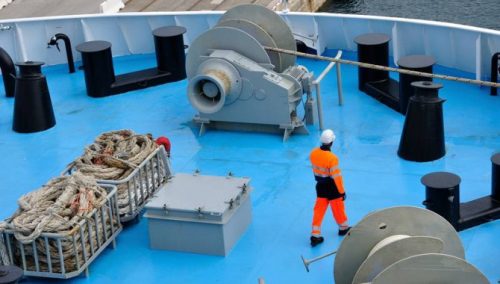Seafarers working onboard cruise vessels and ferries rank among the unhappiest in the shipping industry, a new report released by the Mission to Seafarers shows.
The Seafarers Happiness Index report for Q2 2019, which is produced in association with P&I insurer the Shipowners’ Club, found that cruise and ferry crews had an average score of 5.3/10 on their general happiness level.
This is 15 percent less than the global average across all vessel types, which stands at 6.27 this quarter.
Happiness levels for those working on tankers, bulk carriers and containerships were all close to the global average, coming in at around 6.3/10.
Seafarers on dredgers were the most satisfied, according to the data. However, the percentage of respondents serving on this vessel type was relatively low.
When measured by age, happiness levels were highest among the youngest seafarers. This is reinforced when measured by rank, with cadets recording the highest levels of happiness, an encouraging sign among those commencing their careers at sea.
Across all vessel types, four key issues emerged from the survey responses in this three-month period. They include delayed payment of wages, decreased shore leave, workload stress caused by smaller crews onboard and a lack of understanding from shore staff with regard to seafarer welfare issues.
At the same time, concern around seafarer abandonment continues to grow, with many seafarers expressing a sense of vulnerability following a number of recent incidents around the globe. The organization also received a number of reports of aggression, violence and bullying against female seafarers.
On the positive side, seafarers’ happiness levels with their ability to keep in contact with their family when at sea rose this quarter. This is an encouraging indication of the benefits to seafarers from improved connectivity at sea, as well as the importance of further improvements in both the availability and cost of communications to seafarers, according to the Mission to Seafarers.
What is more, happiness levels among seafarers with their ability to keep fit and healthy onboard rose as well. In responding to the survey, a number of seafarers also highlighted the importance of physical exercise as a factor in mental wellbeing.
“We are already starting to see tangible results across the industry, as evidenced by the growing number of shipping companies expressing an interest in running their own version of the Happiness Index, as well as our recent nom for the Best Crew Wellbeing Programme at this year’s Safety at Sea Awards,” Steven Jones, Founder of the Seafarers Happiness Index, commented.
“However, we urgently need more data and to hear the stories of more seafarers, including those who have already taken the survey, if we are to build up this good work. To support this, we are building new online capabilities and applications to process the data, and working hard to communicate the results of each survey on a global scale.”
The latest survey was completed by thousands of respondents from all regions, with seafarers from the Indian subcontinent, Eastern Europe, Southeast Asia and Western Europe best represented.
